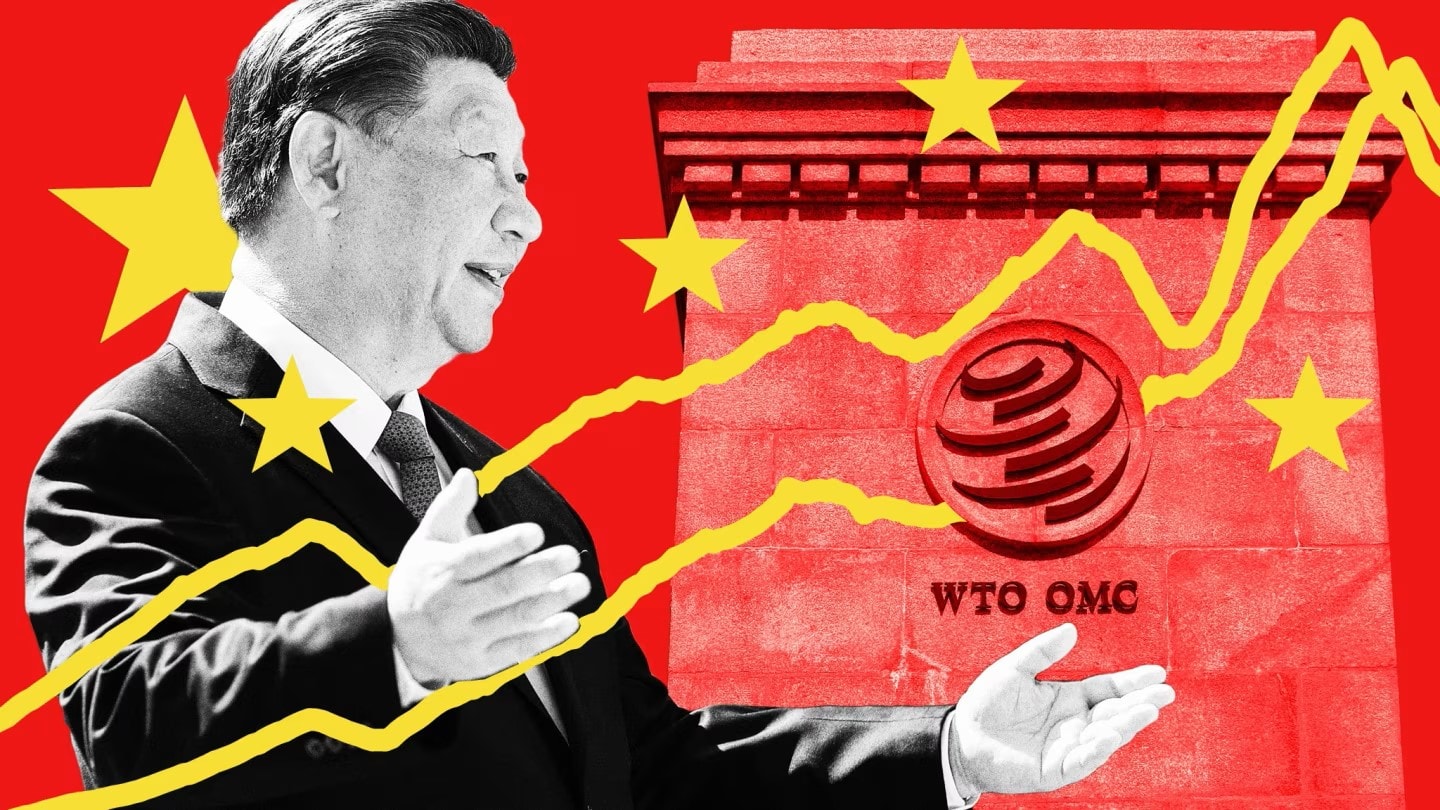Will China Lift the Ban on Crypto in 2025? Exploring the Possibilities
Will China lift the ban on crypto in 2025? This is a pressing question for investors and market analysts. Since 2021, China’s crypto ban has significantly influenced global markets. As 2025 nears, speculation grows about a possible shift. In this article, we explore China’s current crypto policy, historical reasons for the ban, government concerns, market expectations, and the potential impact of a policy change.
Key Takeaways
- China’s 2021 ban on cryptocurrency was driven by concerns over financial crime and capital control, significantly impacting global market dynamics.
- Despite rumors of a potential policy shift by 2025, the likelihood of reinstating cryptocurrency trading and mining remains uncertain due to ongoing regulatory concerns.
- The lifting of the ban could spur economic activity and technological innovation in China, but it would also present regulatory challenges that need careful consideration.
Current Status of China’s Bitcoin Ban

China’s stringent regulations on cryptocurrency have long served as a benchmark for other nations, significantly impacting global discussions on digital asset policies. The bitcoin ban, enacted in 2021, marked a pivotal moment in the country’s approach to digital currency transactions. This move was driven by concerns over financial crimes and the disruption of traditional financial systems, leading the Chinese government to implement stringent regulations to safeguard its financial landscape.
Investors worldwide must stay informed about these regulatory updates, as they can profoundly influence market dynamics and asset values. The ripple effect of China’s stance on cryptocurrency regulation continues to be felt across the globe, with many countries looking to China’s example when formulating their own policies.
Understanding the historical context and the government’s underlying concerns is vital when considering the potential for China lifting its ban.
Historical Context
Before the full ban in 2021, the People’s Bank of China (PBOC) had already limited cryptocurrency exchange operations back in 2017. This early move aimed to curb the significant capital outflows linked to digital currencies, which saw over $50 billion estimated to have flowed out of the country between 2019 and 2020. Such high activity levels on local exchanges and the sheer volume of capital outflow underscored the government’s concerns, leading to a more aggressive stance on digital assets.
The East Asia region, with China at its core, was once a thriving hub for cryptocurrency trading. However, the decision to tighten regulations was driven by the need to maintain control over capital within the country’s borders and to prevent the destabilizing effects of rapid digital currency adoption.
Understanding this historical context is essential to grasp why China took such a prohibitive approach and how it might influence future policy decisions.
Government Concerns
One of the primary motivations behind China’s cryptocurrency ban is the concern over financial crime associated with digital assets. The Chinese government cited issues such as money laundering, fraud, and the disruption of traditional financial systems as critical reasons for imposing the ban. These concerns have driven stricter regulations, aiming to protect the economy and maintain financial stability.
Despite the stringent measures, recent sentiment indicates a decline in market confidence regarding changes to China’s crypto policies. Chinese investors are increasingly cautious due to ongoing regulatory uncertainty, mixed signals from the government, and the perceived risks associated with digital assets. This cautious approach reflects broader concerns within the financial community and highlights the complexities of navigating China’s stance on cryptocurrency.
Market Expectations and Rumors

Rumors about a potential shift in China’s cryptocurrency policy circulate as 2025 approaches. However, the odds of a significant policy change appear to be shrinking, with market expectations indicating a declining optimism around a potential reversal. If China were to lift its cryptocurrency ban, it could significantly change the dynamics of its financial ecosystem, potentially attracting foreign investment and altering financial behavior within the country.
Speculation about China lifting its ban has various sectors closely monitoring the developments. Investors are keenly aware that any policy shift could have profound implications, not just for China but for the global cryptocurrency market. The potential for increased trading volumes and liquidity underscores the importance of staying informed about these evolving market expectations.
Recent Developments
The Chinese government is reportedly considering reversing its 2021 ban on trading and mining cryptocurrencies, a move that could lead to increased economic activity and market liquidity. This consideration marks a significant shift in the country’s approach to digital currencies, which has historically been characterized by a crackdown on cryptocurrency transactions.
However, recent data suggests that any change in China’s cryptocurrency policy may still be several years away. The authorities remain particularly worried that cryptocurrencies might undermine the effectiveness of their existing capital controls. These concerns continue to influence the government’s cautious stance, making the timeline for a potential reversal uncertain.
Investor Sentiment
Chinese investors have shown a mixed response to the rumors of a potential policy shift. On one hand, the prospect of lifting the ban could provide alternative investment opportunities and diversify their portfolios with various digital assets. However, there are significant concerns about the potential for increased financial crime, which necessitates the establishment of rigorous regulations to mitigate risks associated with cryptocurrency transactions.
The People’s Bank of China and other regulatory bodies would need to develop robust frameworks to address these risks effectively. This cautious approach reflects the broader market sentiment, where investors are wary of the uncertainties surrounding cryptocurrency regulation and its potential economic impact.
The balance between opportunity and risk remains a key consideration for those navigating the evolving landscape of cryptocurrency investments in China.
Potential Impact of Lifting the Ban

Lifting China’s cryptocurrency ban could profoundly impact both local and global financial markets. China’s regulatory authorities are reportedly evaluating the implications of a policy reversal, which could signal a significant shift in their approach to digital currencies. Removing the ban might accelerate blockchain advancements and foster innovation across sectors.
However, this potential policy shift also presents regulatory challenges that must be carefully navigated. The balance between fostering innovation and maintaining stringent regulations to prevent facilitating financial crimes and disrupting traditional financial systems remains a critical aspect of any future policy changes.
As China contemplates lifting its ban, the global cryptocurrency community watches closely, anticipating the far-reaching impacts on economic activity and technological innovation.
Economic Activity
China’s digital currency regulations have a significant impact on global financial systems, given the country’s economic size and ambition to lead in digital currency innovation. Lifting the ban could facilitate increased economic activity, attracting foreign investment and institutional participation in the cryptocurrency market.
The evolving regulatory landscape might open doors for institutional investment in cryptocurrencies, enhancing market legitimacy and driving higher activity levels across various sectors. Such changes could stimulate the digital economy, creating new opportunities for growth and development within China’s financial ecosystem.
Technological Innovation
Permitting cryptocurrency transactions might trigger a surge in technological innovation, especially in blockchain technology. This policy shift could foster innovation by enabling new investment avenues in digital assets and decentralized finance (DeFi) platforms.
Emerging trends in digital asset technology offer fresh opportunities, particularly in sectors like finance and supply chain management. The adoption of cryptocurrencies could accelerate the integration of blockchain solutions, enhancing efficiency and security. This potential for innovation highlights the transformative impact of lifting China’s cryptocurrency ban.
Regulatory Challenges
China’s regulatory framework for cryptocurrencies has set a precedent that influences global regulatory frameworks. As the cryptocurrency landscape evolves, compliance with stringent regulations becomes essential for fostering sustainable growth in the industry.
Countries with lenient cryptocurrency regulations often experience rapid growth in crypto-related businesses, though these can come with regulatory and financial risks. Implementing smart contracts can automate compliance measures, reducing regulatory risks by ensuring adherence to legal requirements.
These regulatory challenges underscore the importance of developing robust frameworks to support the growth of the cryptocurrency market.
Global Regulatory Influence

China’s prohibitive stance on cryptocurrency continues to influence regulatory developments around the globe, shaping how nations structure their own cryptocurrency frameworks. This regulatory influence extends to various regions, with some countries adopting more lenient approaches while others follow stricter guidelines.
For instance, in 2023, the European Union introduced comprehensive cryptocurrency regulations, representing a trend towards structured frameworks that contrast sharply with China’s prohibitive stance. Countries such as Brazil and the U.S. are implementing regulations that focus on enhancing user protections and providing clarity in asset classifications, showcasing a more lenient approach compared to China.
This global regulatory influence highlights the diverse approaches nations take in response to the evolving cryptocurrency landscape.
Comparative Analysis
Comparing regulatory approaches is crucial for understanding the global landscape of cryptocurrency and its economic implications. Countries adopting more lenient cryptocurrency regulations, such as Brazil, are seeing increased market activity and demand compared to regions with strict regulations like China.
China’s strict cryptocurrency regulations have led to a stagnation in its market activity compared to more flexible regions. Recognizing these contrasts helps investors make informed strategic asset allocations in the digital economy.
The comparative analysis of different regulatory frameworks provides valuable insights into the potential impacts of China’s policy decisions.
Case Studies
Countries like El Salvador have begun to embrace cryptocurrencies, showcasing various economic benefits and challenges. El Salvador made Bitcoin legal tender in 2021, aiming to promote financial inclusion and attract foreign investment. After adopting Bitcoin, El Salvador has seen increased remittances, a surge in tourism, and growing interest in crypto infrastructure.
The experiences of countries like El Salvador may inform China’s potential consideration of lifting its cryptocurrency ban, especially regarding economic innovation. These case studies provide real-world examples of how cryptocurrency adoption can impact a country’s economy.
Strategic Considerations for Investors

Investors must grasp regulatory changes in the cryptocurrency market to navigate investment risks and opportunities effectively. Strategic considerations, including adaptive asset allocation and ongoing regulatory awareness, enhance investment outcomes in the digital asset space.
Investors should develop strategic asset allocation strategies that consider regulatory changes and continuously monitor the evolving landscape to adjust strategies as needed. This strategy mitigates risks and leverages opportunities from potential shifts in China’s cryptocurrency regulations.
Risk Management
Diversified investment strategies can mitigate risks associated with regulatory changes in the crypto market. Establishing clear risk thresholds for cryptocurrency investments is crucial for protecting capital from significant financial losses.
Utilizing tools like the Crypto Risk Assessment Matrix (C-RAM) can help investors identify and manage risks associated with digital assets. Managing risks from potential regulatory shifts is crucial for maintaining a balanced and secure investment portfolio.
Opportunities
Recent market expectations show growing investor optimism regarding potential changes in China’s cryptocurrency regulations, particularly rumors of the ban being lifted. Analysts believe that a regulatory policy shift might open new investment avenues in digital assets, creating opportunities across sectors.
The potential for innovation through blockchain technology is perceived as a strong opportunity for investment, promising advancements in sectors such as finance and supply chain management. Investors are encouraged to adopt a strategic approach that considers the implications of regulatory changes while navigating the volatile cryptocurrency market.
Plan (including all sections and its subsections):**6. Summary & Conclusions**
- Purpose: Sum up the key points of the article and inspire the reader.
- Content: Recap of main insights about China’s potential policy shift and its implications for the global market, ending with an inspiring note.
7. FAQ
- Purpose: Address common questions.
- Content: Five questions and answers covering the main topics discussed, providing clarity and further insights.
–BEGIN–
Summary
As we navigate the complexities of China’s potential policy shift on cryptocurrency in 2025, it becomes clear that the implications are vast and multifaceted. The current status of China’s Bitcoin ban, deeply rooted in historical context and governmental concerns, has set a stringent regulatory precedent that influences global financial systems and investor sentiment. Market expectations and rumors about a potential reversal in policy highlight both the opportunities and challenges that lie ahead.
The potential impacts of lifting the ban could be profound, driving increased economic activity, technological innovation, and necessitating robust regulatory frameworks. Comparative analyses and case studies of other countries, such as El Salvador, provide valuable insights into the diverse approaches to cryptocurrency regulation. For investors, strategic considerations, including risk management and identifying new opportunities, are crucial in navigating this evolving landscape. As we look forward, staying informed and adaptable will be key to leveraging the potential benefits of any future changes in China’s cryptocurrency policies.
Frequently Asked Questions
What crypto does China use?
China uses the Digital Yuan, or e-CNY, as its central bank digital currency (CBDC).
What is the global crypto market cap prediction for 2030?
The global crypto market cap is predicted to reach $1.8 billion by 2030, reflecting a steady growth of 4.8% annually. Additionally, some estimates suggest Bitcoin may hit $1 million per coin, potentially matching gold’s market cap of $19.3 trillion.
Can Chinese people buy crypto?
Yes, Chinese individuals can buy and possess cryptocurrencies as personal property, despite the bans on ICOs and cryptocurrency exchanges put in place by the government. However, the purchasing process may be more challenging due to regulatory restrictions.
What will happen to crypto in 2025?
In 2025, the cryptocurrency market is expected to experience significant growth, with trading projections between $180,000 and $190,000, while blockchain technology will increasingly influence banking and financial services, enhancing transaction speed and transparency. However, be mindful of potential risks from geopolitical tensions and regulatory changes.
Why did China ban cryptocurrency in the first place?
China banned cryptocurrency primarily due to concerns over financial crimes, money laundering, and the potential disruption to its traditional financial systems. These issues prompted the government to take decisive action against digital currencies.

